Immersing oneself in the timeless traditions of Kyoto’s tea ceremony is a unique opportunity to glimpse the spiritual and artistic dimensions of this revered ritual. Hosted by a licensed Urasenke tea master, the 45-minute experience offers visitors a chance to witness the precise preparation of Japanese green teas, including Sencha, Matcha, and Gyokuro, accompanied by traditional Japanese sweets. With the option to don a traditional kimono, this cultural experience provides a well-rounded introduction to Kyoto’s rich history and traditions. But what secrets might this ceremony unveil about the heart of Japanese hospitality?
Key Points
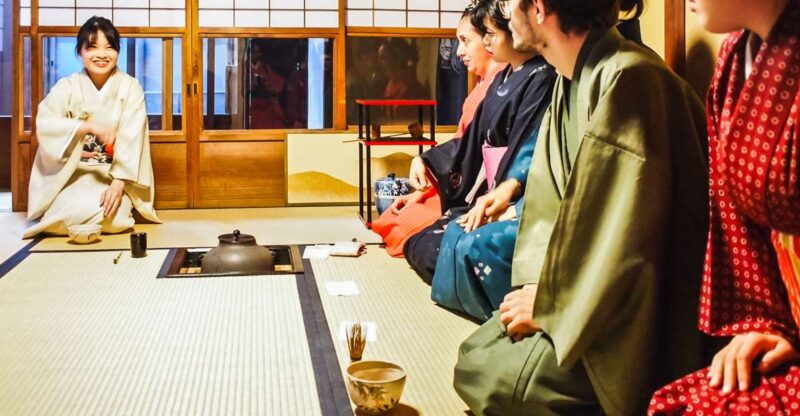
- A 45-minute traditional Japanese tea ceremony experience hosted by a licensed tea master from the Urasenke school.
- Participants learn about the history and spiritual significance of the tea ceremony and witness the precise preparation of Japanese green tea.
- The experience includes two flavors of Japanese green tea (Sencha, Matcha, Gyokuro) and traditional Japanese sweets (Wagashi, Daifuku, Mochi).
- The tea ceremony is held at the Tea Ceremony Koto building, a 1-minute walk from the Kinkakuji-Michi bus stop, and offers the option to dress in a traditional kimono.
- The tea ceremony experience is conveniently located near the iconic Golden Pavilion (Kinkakuji), a 15th-century Zen temple covered in gold leaf.
Experience Overview
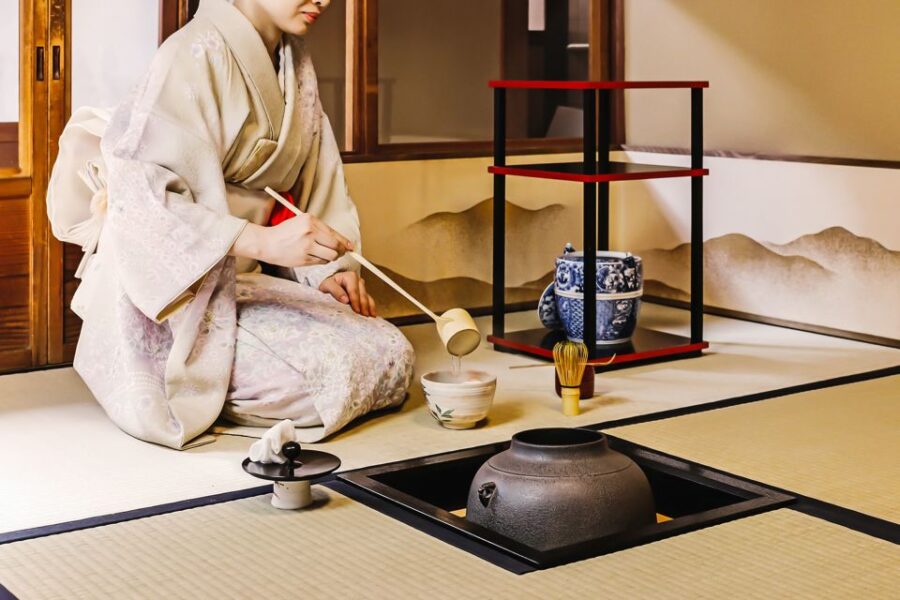
Kyoto: 45-Minute Tea Ceremony Experience
Experience Overview
The traditional Japanese tea ceremony experience is hosted by a licensed tea master from the Urasenke school and lasts for approximately 45 minutes.
Participants will learn about the history and spiritual role of the tea ceremony as they witness the precise preparation of Japanese green tea.
They’ll then have the opportunity to savor the tea, along with traditional Japanese sweets.
The experience also includes the option to wear a kimono, which requires arriving 20 minutes early.
Located just a short walk from the Kinkakuji-Michi bus stop, this event is best combined with a visit to the nearby Golden Pavilion.
You can also read our reviews of more tours and experiences in Kyoto.
What’s Included
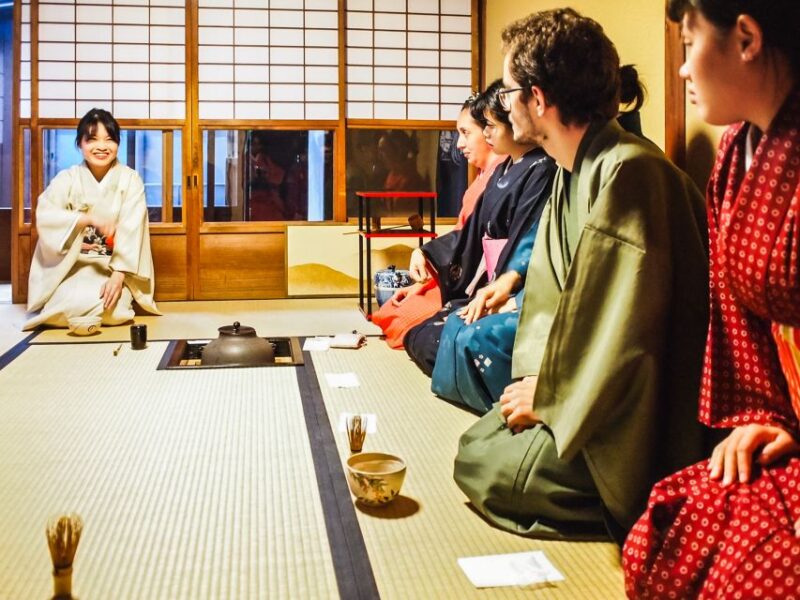
The tea ceremony experience includes two flavors of Japanese green tea and traditional Japanese sweets. Guests can expect to sample:
| Tea Flavors | Japanese Sweets |
|---|---|
| Sencha | Wagashi |
| Matcha | Daifuku |
| Gyokuro | Mochi |
These refreshments aim to complement the rich history and cultural significance of the tea ceremony. Participants can also choose to dress in a traditional kimono, which requires arriving 20 minutes early. The tea experience offers a glimpse into the spiritual and artistic dimensions of this revered Japanese tradition.
Meeting Point
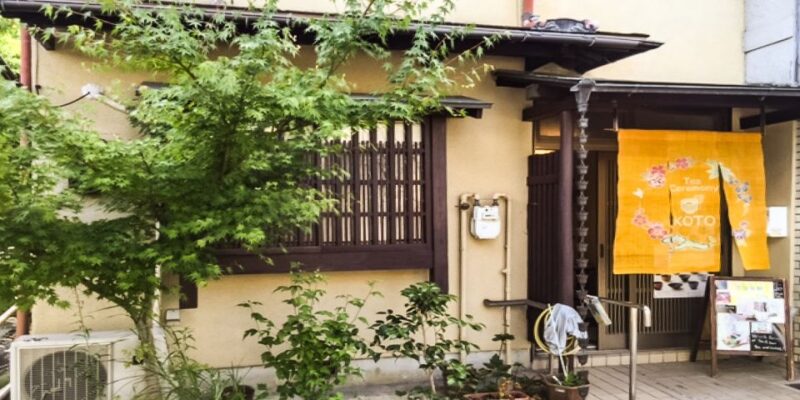
Kyoto: 45-Minute Tea Ceremony Experience
The tea ceremony takes place at the Tea Ceremony Koto building, just a 1-minute walk from the Kinkakuji-Michi bus stop.
Guests can reach the venue by taking Kyoto city buses 204 or 205 from Kitaoji subway station, JR Enmachi, or Kinkakuji-temple.
The ceremony is conveniently located near the iconic Golden Pavilion (Kinkakuji), making it an ideal pairing for visitors.
Guests should note that it can be difficult to get a taxi after the event, but a large taxi stand is nearby.
Nearby Attraction
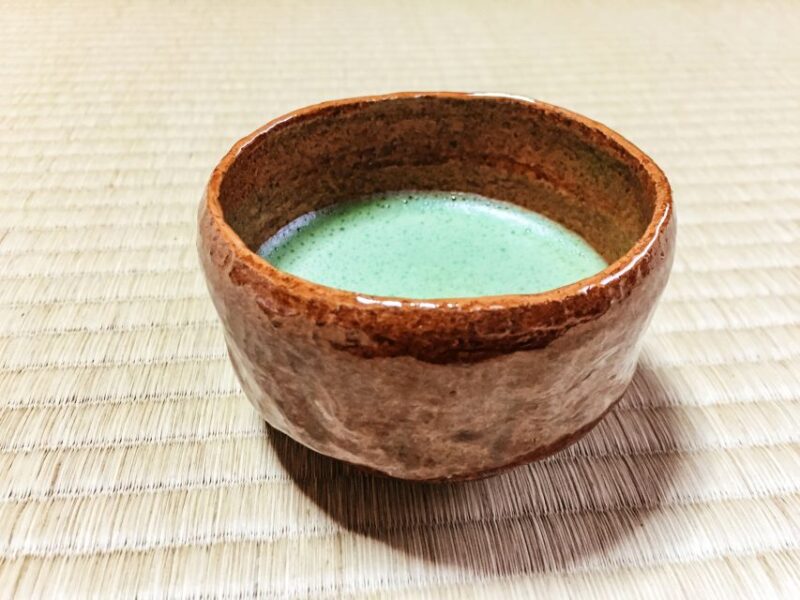
Visitors to the tea ceremony often pair it with a visit to the nearby iconic Golden Pavilion (Kinkakuji), one of Kyoto’s most renowned landmarks. This stunning 15th-century Zen temple is covered in gold leaf, creating a breathtaking reflection on the pond below.
Guests can stroll through the temple’s gardens, which feature picturesque ponds, bridges, and pagodas. The serene setting provides a perfect complement to the tranquility of the tea ceremony experience.
After exploring the Golden Pavilion, visitors can easily return to the tea ceremony location via the nearby bus stop. Combining these two cultural experiences offers a well-rounded introduction to Kyoto’s rich history and traditions.
More Great Thing To Do NearbyArrival Time
It’s recommended to arrive 20 minutes early if opting for the kimono add-on to allow time for changing into the traditional attire. This ensures you’re ready when the tea ceremony begins promptly. Even without the kimono, arriving a few minutes ahead is advised to find the meeting point and get settled.
| Arrival Time | Recommendation |
|---|---|
| With Kimono | 20 minutes early |
| Without Kimono | 5-10 minutes early |
| After Start Time | Not recommended |
| Transportation | Nearby bus stop, difficulty getting taxis after |
Arriving on time is important, as the tea ceremony is a carefully choreographed experience best enjoyed from start to finish.
Dress Code
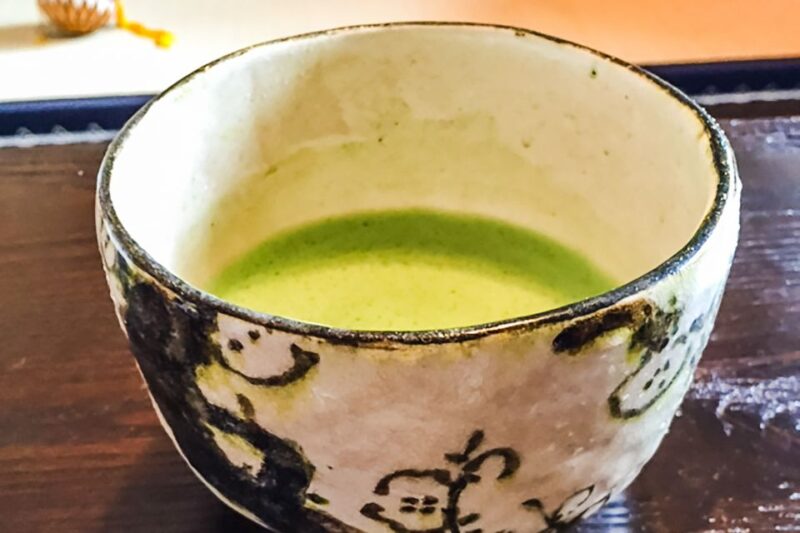
There’s no strict dress code for the Kyoto tea ceremony experience. Guests can wear casual or smart casual attire, as the focus is on the traditional ritual rather than formal dress.
The tea ceremony emphasizes the spiritual aspect of the experience, so guests should feel comfortable and relaxed in their clothing. Kimonos can be rented as an optional add-on, but they aren’t required.
The tea master leading the ceremony will be wearing traditional Japanese attire. Ultimately, the dress code is flexible, and guests should choose clothing that allows them to fully enjoy the tranquil and meditative atmosphere of the tea ceremony.
Transportation
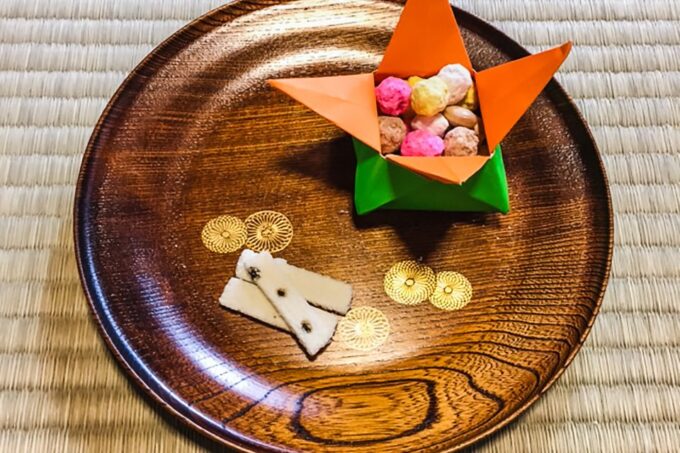
Kyoto: 45-Minute Tea Ceremony Experience
Transportation
Getting to the tea ceremony venue is a straightforward affair, with convenient public transportation options available.
The Tea Ceremony Koto building is just a minute’s walk from the Kinkakuji-Michi bus stop, which is easily accessible by Kyoto city buses 204 or 205 departing from Kitaoji subway station, JR Enmachi, or Kinkakuji-temple.
Travelers can expect a hassle-free commute to the event. However, it’s worth noting that finding a taxi after the ceremony might be challenging, as there’s a large taxi stand nearby.
Booking and Cancellation
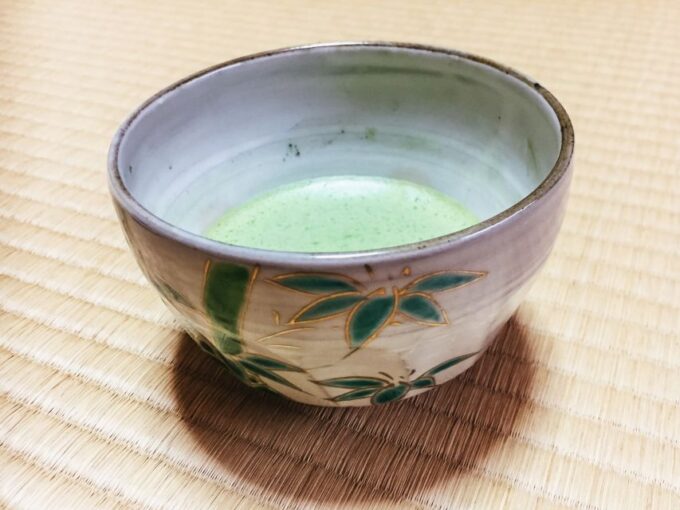
Given the popularity of the tea ceremony experience, travelers are advised to book their spot in advance, as it’s likely to sell out.
Prices start from $20.75 per person, and the booking process allows visitors to reserve their spot now and pay later. Plus, the tea ceremony offers free cancellation up to 24 hours before the event, providing flexibility for those with changing plans.
The booking process is straightforward:
- Select your desired date and time.
- Decide if you’d like to add the kimono experience, which requires an early 20-minute arrival.
- Finalize your booking and pay later, or take advantage of the free cancellation policy if needed.
Frequently Asked Questions
Is the Tea Ceremony Performed in English?
The tea ceremony is typically conducted in Japanese, with English translation and explanation provided to participants throughout the experience. The licensed tea master ensures the event is accessible and informative for international visitors.
Can Children Participate in the Tea Ceremony?
Children can typically participate in the traditional Japanese tea ceremony, though the experience may be modified to suit their age and attention span. Many tea houses welcome families and provide accommodations for younger guests.
Is the Tea Ceremony Suitable for Individuals With Dietary Restrictions?
Tea ceremonies can generally accommodate individuals with dietary restrictions. The hosts are usually willing to provide alternatives, such as gluten-free or vegetarian sweets, to ensure all participants can fully enjoy the experience.
What Is the Difference Between Urasenke and Other Tea Ceremony Schools?
The Urasenke school emphasizes hospitality and spiritual aspects, while other Japanese tea ceremony schools may focus more on formalities, aesthetics, or regional traditions. Urasenke is one of the major and most well-known tea ceremony lineages in Japan.
Can I Take Photos During the Tea Ceremony?
Typically, taking photos during a tea ceremony is not allowed as it can disrupt the serene atmosphere. However, some tea ceremony schools may permit limited photography at the end of the ceremony. It’s best to check with the host beforehand.
Recap
The tea ceremony in Kyoto offers a unique opportunity to take in the rich cultural traditions of Japan.
Led by a licensed Urasenke tea master, this 45-minute experience showcases the spiritual and artistic dimensions of this revered ritual.
Visitors can witness the preparation of various Japanese green teas and savor traditional sweets, further enhanced by the option to don a traditional kimono.
Conveniently located near the iconic Golden Pavilion, this tea ceremony provides a well-rounded introduction to Kyoto’s history and traditions.
You can check if your dates are available here:More Tour Reviews in Kyoto
- The Art of Geisha: Exclusive Show & Traditional Japanese Game
- Tea Ceremony With Kimono and Professional Photoshoot in Kyoto
- Kyoto Arashiyama Bamboo Forest Hidden Hiking Tour
- Kyoto Early Morning Walking Tour: Nature & History
- Small-Group Dinner Experience in Kyoto With Maiko and Geisha
- Private Kyoto Night Tour: Historic Walk at Gion and Fushimi
Not for you? Here's more things to do in Kyoto we have recnetly reviewed
- 5 Best Cruises And Boat Tours In Kyoto
- 14 Best Dining Experiences In Kyoto
- 20 Best Full-Day Tours In Kyoto
- 5 Best 2 Day Tours In Kyoto
- 2 Best 4 Day Tours In Kyoto
- 20 Best Photography Experiences In Kyoto
- 13 Best Dinner Tours In Kyoto
- 25 Best Food Tours In Kyoto
- 14 Best Lunch Experiences In Kyoto
- Kyoto Bus Tour: Iconic KInkakuji, Ginkakuji, Kiyomizu Temple (AW)
- Kyoto Bus Tour: Arashiyama, Kinkaku-ji Review
- Gyoza Cooking Class in Kyoto: Traditional Japanese Dumplings
